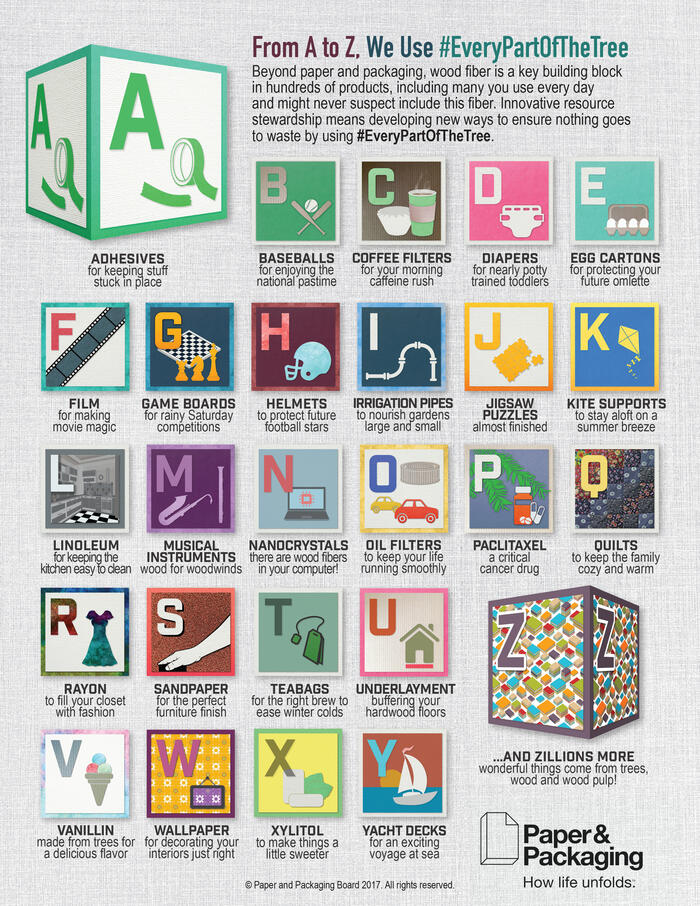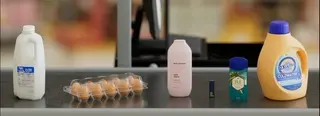
Wood fiber is one of the most recyclable and renewable natural resources on the planet and the principle raw material used in making paper and paper-based packaging. In fact, the U.S. grows nearly twice the number of trees we harvest annually, and in 2019, we recycled 66% of all paper products used. But that’s just one branch on the tree. Over decades of research and development, the forest products industry has innovated ways to use those same natural resources in literally hundreds of other products, including many you’d never suspect.
From the trunk to the branches, no part of the tree goes to waste. The high-quality wood found near the base of trees can be used to make sturdy furniture and hardwood flooring, whereas the thinner branches are used for pulpwood to create paper products like cardboard boxes and sheets of paper. Even the tree’s leaves and bark can be used to generate more than half the energy needed by paper mills!
Aside from the products you already know come from trees, there are countless more that may surprise you. Did you know items we rely on day-to-day like teabags, coffee filters, tape and egg cartons are all products made from trees? Adhesives, like tape, can be made from tree lignin, a polymer found in the tissue of most plants, and a more planet-friendly alternative to fossil fuels used in most tapes. Lesser known tree-based products include nanocrystal, paclitaxel and xylitol – words you may have never heard of before. Cellulose nanocrystals are what give trees their rigidity and strength and can be used in a number of things like electronics to car components. Paclitaxel is a cancer treatment drug found in the bark of the Pacific yew tree. And xylitol is a natural sweetener found in birch bark and used in many chewing gums.
If you found those interesting, here are more ways the paper industry is using #EveryPartOfTheTree from A to Z. Because good resource stewardship means doing your best to make sure nothing goes to waste.




